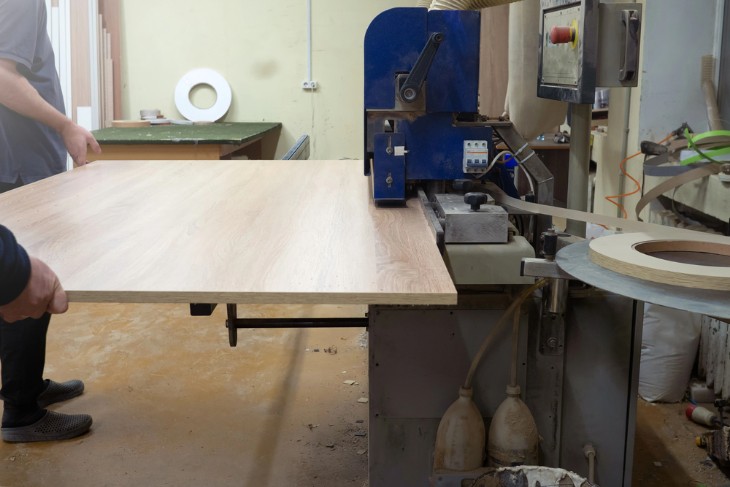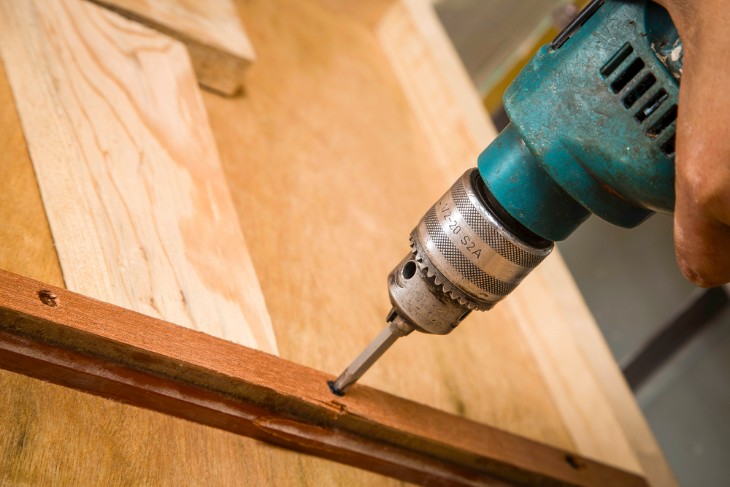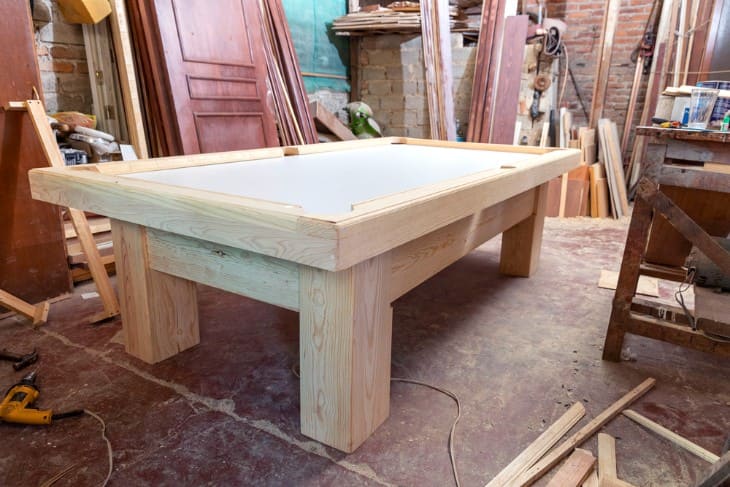- The Journey Begins: Selecting Premium Materials
- Crafting the Frame and Legs: The Foundation of Stability
- The Bed of the Table: Ensuring a Perfect Playing Surface
- Cloth Laying: The Art of Precision
- Cushions and Rails: Combining Functionality with Style
- Attention to Detail: Final Touches
- A Blend of Tradition and Technology
- Ensuring Durability: How Snooker Tables Stand the Test of Time
- Final Takeaway
Snooker, a game steeped in history and elegance, is not just about the skilful play; it's also about the exceptional craftsmanship of the tables on which it is played.
In this article, we delve into the intricate world of snooker table production, exploring the artistry and precision that go into creating these masterpieces. From selecting the finest materials to the meticulous assembly process, every step in crafting a snooker table is a testament to tradition and modern engineering.
The Journey Begins: Selecting Premium Materials
When making a snooker table, choosing the right materials is key. The quality of these materials affects how long the table lasts and how it looks. Let's start with the wood. Hardwoods like oak, mahogany, and ash are top choices. They are strong and look great. The wood needs to be dry and straight. This makes sure the table is solid and looks smooth.
The slate for the table bed is also important. It comes from special quarries. The best slate is flat and even. This makes the balls roll smoothly. It's a big part of what makes playing snooker fun and fair.
Next, we have the cloth that covers the slate. It's usually a mix of wool and nylon. The cloth must be high quality. It needs to be smooth and stretch well. This ensures the balls move fast and straight. The classic green colour also gives the table its traditional look.
Rubber for the cushions is another key material. It needs to bounce the balls back just right. This makes the game challenging and exciting. The rubber should last a long time too, so it doesn't change how the balls move as it gets older.
Last, the pockets are often made of leather and brass. They need to be the right size. Too big or too small can change how the game is played. They also add a nice touch to the table's look.
Crafting the Frame and Legs: The Foundation of Stability
Building a snooker table's frame and legs is all about making a strong, stable base. The frame holds the entire table up, so it needs to be sturdy. The legs must support the weight of the table and keep it level. Let's break down how this is done.
First, craftsmen use hardwoods like oak or mahogany for the frame and legs. These woods are strong and can handle a lot of weight. They also last a long time and look good. The wood pieces are cut with precision. This means every part fits together perfectly.
Then, the legs are shaped. They are not just straight poles. They have curves and designs. This makes the table look elegant. But, the shape is also practical. It helps spread the table's weight evenly. This stops the table from wobbling or leaning to one side.
Joining the frame and legs is a skilful task. It uses techniques like dovetail or mortise and tenon joints. These kinds of joints lock the parts together tightly. They don't need many nails or screws. This keeps the frame strong and steady.
The frame is then attached to the table's bed. This is where the slate sits. The frame needs to be level, so the slate doesn't tilt. Even a small tilt can make the balls roll wrongly. So, the frame is checked and adjusted to be perfectly flat.
Lastly, the frame and legs are finished with varnish or polish. This protects the wood and makes it shine. It also brings out the natural colour and grain of the wood.

The Bed of the Table: Ensuring a Perfect Playing Surface
The bed of a snooker table is where the game happens. It needs to be just right for the balls to roll smoothly. The bed is usually made of slate. Slate is a type of rock that's flat and doesn't bend. This makes it perfect for snooker tables.
First, the slate is cut to fit the table size. It's important to get the size right. If it's too big or too small, it won't fit the frame properly. Then, the slate is sanded down. This makes it very smooth. Any bumps or rough spots could make the balls roll in the wrong direction. So, the surface must be as flat as possible.
The slate is then checked with a level. This is to make sure it's completely flat. Even a small tilt can affect the game. The slate is adjusted until it's just right. This part of the process needs a lot of care and attention.
Once the slate is flat and smooth, it's placed on the table's frame. It's important to put it on carefully. The slate is heavy, and if it's not handled right, it could break.
After the slate is in place, the cloth is put on top. The cloth is stretched over the slate and secured. It needs to be tight with no wrinkles. This helps the balls roll fast and straight. The cloth also needs to be durable. It gets a lot of wear from the balls hitting it.
Cloth Laying: The Art of Precision
Laying the cloth on a snooker table is a key step. It needs to be done with a lot of care. The cloth is what the balls roll on, so it has to be just right. Here's how it's done.
First, the right cloth is picked. It's usually a mix of wool and nylon. This blend is smooth and strong. The clothes need to last a long time and stay smooth for good play. The colour is often green, which is traditional for snooker tables.
The cloth is then cut to fit the table. It must cover the whole slate bed without any extra hanging off. Once it's the right size, the cloth is laid on the slate. This is where precision comes in. The cloth must be stretched over the slate. It needs to be tight, with no wrinkles or loose parts. If the cloth isn't tight, the balls won't roll straight.
Stretching the cloth is done by hand. The sides are pulled and then fixed to the table. Special tools are used to make sure the cloth is even and tight all over. This part of the process needs a steady hand and a good eye.
After the cloth is stretched and fixed, it's trimmed at the edges. This makes it neat. The edges are tucked away so they don't get in the way of the game.
Finally, the cloth is brushed. This removes any dust or small bits. It makes sure the surface is as smooth as can be. A smooth cloth means the balls roll fast and straight.
Cushions and Rails: Combining Functionality with Style
The cushions and rails on a snooker table are important for the game. They also add to the table's look. Let's see how they are made and why they matter.
First up, the cushions. These are the soft parts on the sides of the table. They are there to bounce the balls back into play. Good cushions are key for a fair game. They are made from a special rubber. This rubber has to bounce the balls back just right. Not too hard, not too soft. This keeps the game challenging and exciting.
The rubber for the cushions is cut to fit each side of the table. Then, it's glued onto the wooden rails. This needs to be done carefully. The cushions have to be at the right angle. If they're not, the balls won't bounce properly.
Now, the rails. These are the wooden parts around the table's edge. They hold the cushions in place. But they're not just for holding things. They are also part of the table's design. The rails can have different styles and patterns. This makes each table unique. They are often polished to look shiny and smooth. This adds to the table's elegance.
The rails also have a practical job. Players often lean on them when taking a shot. So, they need to be strong and steady. They are made from the same hardwood as the frame. This makes them durable and able to handle the weight.
Attention to Detail: Final Touches
The last steps in making a snooker table are all about the details. These small touches make a big difference. They make the table not just good for playing, but also nice to look at.
First, let's talk about the pockets. These are the holes the balls go into. They are usually made with leather and brass. The leather is for the part the balls hit. It needs to be tough so it doesn't tear. The brass is for the rings around the pockets. It adds a classy look to the table.
The size and shape of the pockets are important. They can't be too big or too small. The right size makes the game challenging but fair. The pockets are carefully sewn and attached to the table. This needs to be done neatly. It's not just about how they work, but also how they look.
Next, the table gets a final polish. This is to make the wood shine and bring out its colour. The polish also protects the wood. It keeps it from getting scratched or damaged. This step makes the table look new and elegant.
The table also might have some decorative touches. These can be things like logos or special designs. They are usually put on the sides or the ends of the table. These designs are often done by hand. They show the skill of the craftspeople who made the table.

A Blend of Tradition and Technology
Making snooker tables is a mix of old methods and new tech. This blend is what makes today's tables so good. Let's see how tradition and technology come together in this craft.
First, the tradition. Snooker tables have been made for many years. The basic way of making them hasn't changed much. Using hardwoods, hand-cutting slate, and sewing pockets are old methods. These techniques have been passed down through generations. They are tried and tested. They give the tables their classic look and feel.
But, there's also new technology in the mix. Modern machines help a lot. They cut wood and slate more precisely than ever before. This means the parts fit together perfectly. It makes the tables more sturdy and even. Tech also helps in checking the flatness of the slate. Laser tools can see even tiny bumps. This wasn't possible in the old days.
There are also new materials. The clothes and rubbers used today are better than before. They last longer and perform better. This is thanks to advances in material science. These new materials keep the tables playing well for longer.
Computers play a part too. They help in designing the tables. This means more complex and beautiful designs are possible. It also helps in making each table consistent. Every table made can be just as good as the last.
Ensuring Durability: How Snooker Tables Stand the Test of Time
Durability is a big deal when it comes to snooker tables. These tables are built to last many years. Here's a look at how they're made to be so sturdy.
First, the choice of wood is important. Hardwoods like oak and mahogany are used because they're strong and don't wear out quickly. They can handle a lot of games and still look good. The wood is treated to resist water and humidity. This stops it from swelling or shrinking, which can ruin the table.
The slate, which is the main playing surface, is another key part. It's a tough rock that doesn't change shape over time. This means the surface stays flat, which is crucial for a good game. The slate is thick, too, so it can take a lot of wear without getting damaged.
The cloth on the table is also made to last. It's a blend of wool and nylon, which is tough and resists wear. It doesn't stretch out or tear easily. This means the surface stays smooth for a long time, letting the balls roll properly.
The cushions on the sides are made from high-quality rubber. This rubber has kept its bounce for years. It doesn't get hard or crumbly, which can happen with cheaper materials. This makes sure the balls rebound consistently over time.
Lastly, the finish on the wood is there to protect it. It's a layer that stops scratches and marks. It also keeps the wood from fading in the light. This keeps the table looking new for longer.
Final Takeaway
A snooker table is much more than a game surface. It's a showcase of skill and quality. Every part of its making, from the wood to the final polish, shows great craftsmanship. The careful selection of materials ensures durability and beauty. The precision in making the frame, bed, and cloth guarantees a perfect game. The attention to detail like the pockets and finishes adds elegance.
The mix of old techniques with new technology makes these tables both classic and modern. All these factors together make a snooker table not just a piece of sports equipment, but also a work of art. It's clear that at every snooker table, there's a deep respect for tradition and a commitment to excellence.
For more information:











